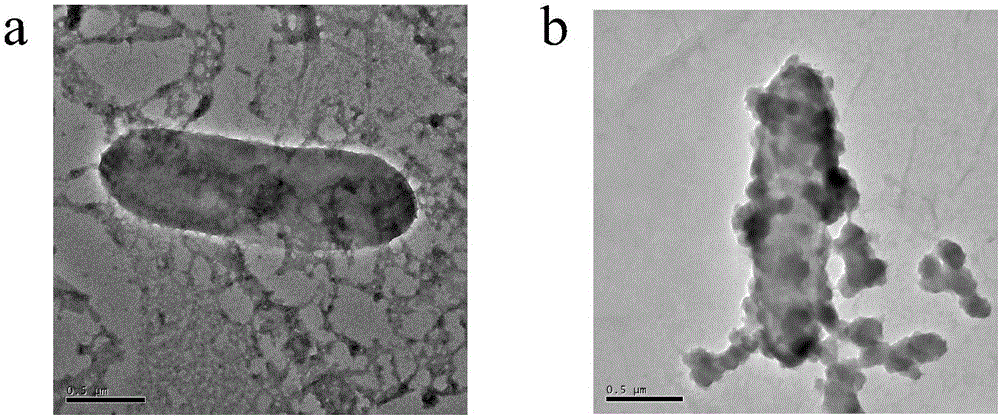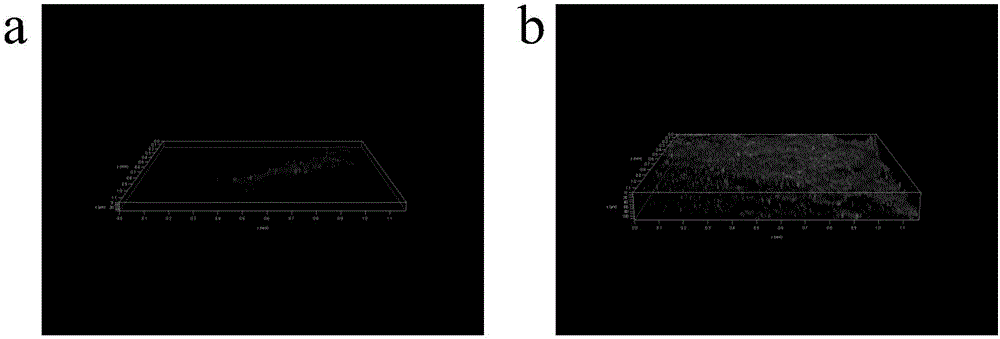Method for preparing high-stability microbial electrochemical sensor
A microbial electrochemistry and sensor technology, applied in scientific instruments, instruments, material analysis by electromagnetic means, etc., can solve problems such as the limitation of the scope of application, and achieve the effect of fast detection and stable operation.
- Summary
- Abstract
- Description
- Claims
- Application Information
AI Technical Summary
Problems solved by technology
Method used
Image
Examples
Embodiment 1
[0019] A prepared highly stable microbial electrochemical sensor operates under strong acid conditions:
[0020] When realizing rapid and continuous water quality monitoring, the low pH value of the water body to be tested often limits the stable operation of the detection system, causing a large number of organisms in the sensor system to die or fall off, which directly affects the operation of the reactor and causes the monitoring system to be paralyzed.
[0021] The cell body of the sensor is composed of a plexiglass container with a diameter of 50mm and a height of 100mm and a cover made of polytetrafluoroethylene material, and the working electrode is inserted into the container at a distance of 0.25cm 2 The glassy carbon electrode, the reference electrode is 3.5M Ag / AgCl electrode and the counter electrode is 1cm 2 platinum sheet.
[0022] Add the effluent of the long-term acclimatized biophase-stabilized microbial fuel cell with nitrogen exposure for 10 min to the reac...
Embodiment 2
[0026] A prepared highly stable microbial electrochemical sensor operates at high temperature:
[0027] When realizing rapid and continuous water quality monitoring, when the external ambient temperature exceeds the maximum suitable temperature for organisms, it often limits the stable operation of the detection system, causing a large number of organisms in the sensor system to die or fall off, which in turn directly affects the operation of the reactor, resulting in monitoring The system is paralyzed.
[0028] The cell body of the sensor is made of polytetrafluoroethylene material with a diameter of 30mm and a height of 30mm, and the working electrode is inserted into the container at a distance of 0.1cm 2 The glassy carbon electrode, the reference electrode is 3.5M Ag / AgCl electrode and the counter electrode is 1cm 2 platinum sheet.
[0029] Add the effluent of the microbial fuel cell with long-term acclimatization and biophase stability to the reactor with nitrogen expos...
Embodiment 3
[0032] A prepared highly stable microbial electrochemical sensor operates at low temperature
[0033] When realizing rapid and continuous water quality monitoring, when the external ambient temperature is lower than the minimum suitable temperature for organisms, the stable operation of the detection system is often limited, causing a large number of organisms in the sensor system to die or fall off, which in turn directly affects the operation of the reactor, resulting in The monitoring system is paralyzed.
[0034] The cell body of the sensor is made of polytetrafluoroethylene material with a diameter of 100mm and a height of 200mm, and the working electrode is inserted into the container at a distance of 0.25cm 2 The glassy carbon electrode, the reference electrode is 3.5M Ag / AgCl electrode and the counter electrode is 1cm 2 platinum sheet.
[0035] Add the effluent of the microbial fuel cell with long-term acclimatization and biophase stability to the reactor for 30 minu...
PUM
| Property | Measurement | Unit |
|---|---|---|
| Diameter | aaaaa | aaaaa |
| Thickness | aaaaa | aaaaa |
| Thickness | aaaaa | aaaaa |
Abstract
Description
Claims
Application Information
 Login to View More
Login to View More - R&D
- Intellectual Property
- Life Sciences
- Materials
- Tech Scout
- Unparalleled Data Quality
- Higher Quality Content
- 60% Fewer Hallucinations
Browse by: Latest US Patents, China's latest patents, Technical Efficacy Thesaurus, Application Domain, Technology Topic, Popular Technical Reports.
© 2025 PatSnap. All rights reserved.Legal|Privacy policy|Modern Slavery Act Transparency Statement|Sitemap|About US| Contact US: help@patsnap.com



